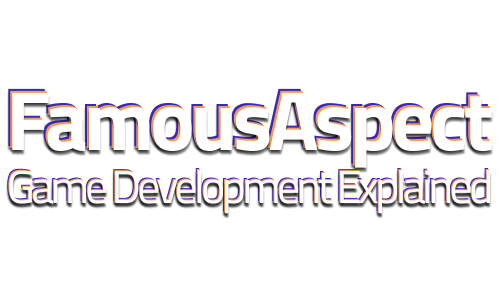A few weeks ago, I had a great discussion with Chris Heatherly, current Head of Games & Engagement at Recur and former game executive at NBCUniversal & Disney.
Recur is a chain-agnostic marketplace that has already announced partnerships with Star Trek, Care Bears, Nickelodeon, college basketball and more. In this episode we spoke about what sets Recur apart, the importance of the secondary market for NFTs, and Chris nearly getting redpilled by Logan Paul. Here are some of the highlights from our conversation
On what sets Recur apart…
Chris Heatherly: Long term, the real business is the platform and the technology. We took a bet on being chain-agnostic. So we don’t have a currency, we don’t have a blockchain. We have our own platform that is compatible with any blockchain. We have some really cool technology that allows you to shift NFTs from one chain to another chain. I think creating a lot of interoperability will be super important as we get into the metaverse…
You can pay with crypto, but you can also pay with Apple Pay. You can pay with a credit card. We think that’s really important to expanding the market because not everybody knows how to set up a MetaMask. Buying on our platform is as streamlined as any eCommerce experience you’ve ever had.
On challenges transitioning from mobile free-to-play to Web3 gaming…
Chris Heatherly: One of the things I like about where we started is focusing just on the collectible experience has forced us to really think deeply about these real world economies, how they function, and what the collecting dynamics are.
[In free-to-play] you can turn on those spigots whenever you want. Nobody knows the number of Wolverines in Marvel: Contest of Champions. Nobody cares.
But suddenly when you start thinking about a game where everything is a scarce resource, that is inherently going to change all of the dynamics and gameplay.
Ethan Levy: In mobile, when we sell a card pack we set a sales target internally and we hit it or we don’t hit it, but the users don’t know and it doesn’t affect them at all. Whereas with an NFT drop, you don’t set a sales target, you actually manufacture a number of card packs and if they don’t all sell out, it affects the perceived value of the ones that were purchased. It’s such an interesting and different way to think about running your economy.
On the importance of the secondary market & thinking long term…
Chris Heatherly: The secondary market is where your project is gonna live or die, because if there’s no demand on the secondary market, then there’s not going to be any interest in your future primary sales drops. So you have to really focus on how your game mechanics help drive transactions and help drive reasons for people to trade with one another in the secondary marketplace.
Ethan Levy: [in one of my recent GDC talks] I talked about building a 10 year game economy, and I was working on an NFT driven game in the background. So these were the types of design questions I was wrestling with: if I’m doing a hero collecting game, how do I make sure that my hero’s stats or traits that are immutable and written, let’s say six months before the first time people play it, how do I make sure that those are still valid for a game mode that I’m not going to design for five years?
That is a big challenge. I at least have a way that I think I solved that challenge. What I like about the idea of NFT based gaming is that the revenue model forces you to put your player’s long term interests around engagement ahead of any short term economic concerns that you might have.
On the future of the metaverse and shared MMO-style social experiences…
Chris Heatherly: You know, Club Penguin was built off of people hanging out with one another and we made three quarters of a billion dollars. I wouldn’t discount the idea of the social MMO hangout space, especially with this generation of kids and young adults that are into NFTs.
They’re digital first, they’re digital natives. Their persona is their Instagram account, their TikTok account. That’s the reason that one of the first pieces of utility is using your profile picture on some of these social media platforms, but avatars are coming right behind it.
And you’re gonna have avatars like Ready Player Me, that you had on the podcast, that people are going to want to buy and own. Then it’s going to be, “I want to go somewhere with them.” And then creators are gonna create places for people to go. A lot of those places will suck and they won’t be super compelling, but some of them will break through. So you’re going to have this very game-aware, very game-interested, robust creator economy. It’s going to emerge as this really dynamic ecosystem.
On the takeaways for Web3 from the physical toy & collectible industry…
Chris Heatherly: Collectors used to wait outside the Toys R’ Us until the Toys R’ Us opened. Because they knew the day that the long boxes (boxes with many packs of trading cards) were gonna drop.
And some of them would sit on the packs and hold them for a million years, and some of them they would open and sell to their friends – sell a pack at a time, or open and sell the cards.
Whether you open the long box matters, whether you open the pack matters, and what you do with the cards once you do open it matters. All of these are choices that don’t exist when you don’t have scarcity. The concept of a “long box” wouldn’t really matter in free-to-play land, but in this world if I were to drop you a long box of NFTs and then you were able to sell to your friends, then I would have given you a sort of small business.
Ethan Levy: What I’m taking away from this is when somebody opens a digital card pack, it better be stream worthy. The interactive experience of it should be a ‘scene partner’ that someone could play off of on their YouTube stream.
Want the latest insights on Web3 game development? Connect with me on LinkedIn or follow me on Twitter.


